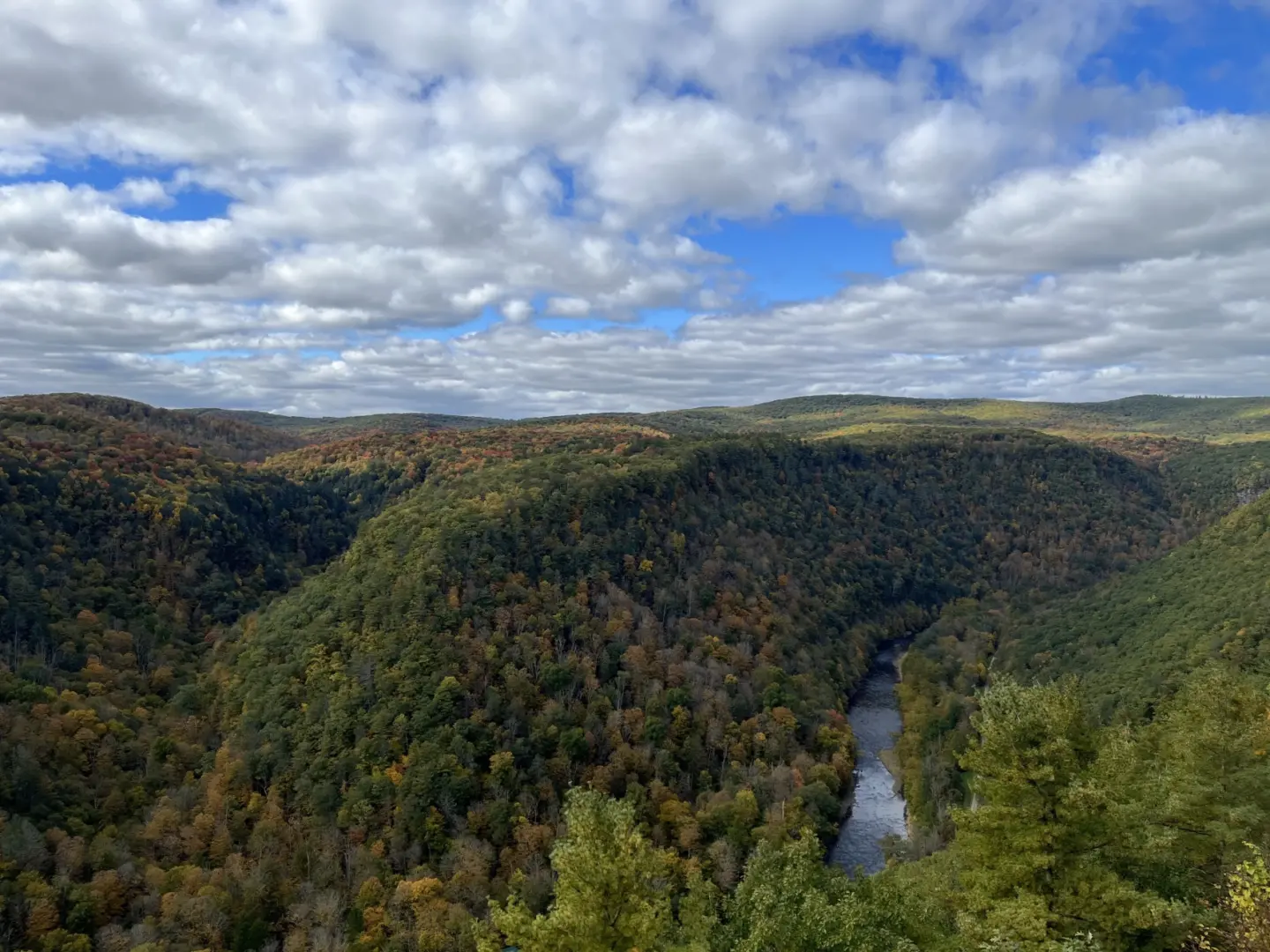
Pine Creek Gorge, often called the Grand Canyon of Pennsylvania, seen from Leonard Harrison State Park. The gorge runs through Tioga, Lycoming and Clinton counties in the PA Wilds section of the state.
Kat Bolus / WVIA News

Pine Creek Gorge, often called the Grand Canyon of Pennsylvania, seen from Leonard Harrison State Park. The gorge runs through Tioga, Lycoming and Clinton counties in the PA Wilds section of the state.
Kat Bolus / WVIA News

Kat Bolus / WVIA News
Pine Creek Gorge, often called the Grand Canyon of Pennsylvania, seen from Leonard Harrison State Park. The gorge runs through Tioga, Lycoming and Clinton counties in the PA Wilds section of the state.
The Maryland Air National Guard will not fly low level training flights over the PA Wilds, according to U.S. Senators Bob Casey and John Fetterman.
Local and federal officials and stakeholders from the region pressured the military for more than two years to abandon the plan. They said it would impact the economy of North Central Pennsylvania and the residents’ quality of life. WVIA News first reported about the plan and its opposition last year.
“To have an aircraft that would be flying just 100 feet above ground level would be terribly disturbing, and it would really hurt that community,” said Casey. “I’m just grateful that we’re at the point after years of advocacy that both the Air Force and the National Guard Bureau rescinded the proposal to create this low flying training zone.”
The National Guard Bureau decided to terminate the proposal “based on the Air Force’s recent decision to phase out the A-10s of the 175th Wing of the Maryland Air National Guard at Warfield Air National Guard Base.”
The pilots used the military operation area to practice flights with fighter jets — called Warthogs. The Air Force is transitioning the Warfield Air National Guard Base in Maryland to a cyber wing mission, according to the military branch.

Four A-10 Thunderbolt IIs return from a flying hours record setting sortie. )Stocktrek Images/Getty Images/Stocktrek Images)
The original plan proposed the pilots would practice diving to 100 feet above ground level then climbing in some areas of the existing Duke Military Operation Area (MOA) — calling that area the Duke Low MOA. The current MOA covers 21,078 square nautical miles in parts of McKean, Potter, Tioga, Clinton, Cameron and Elk Counties and a small portion of New York.
Elected officials, stakeholders from North Central Pennsylvania and the state Department of Conservation and Natural Resources (DCNR) had concerns. For one, the out-of-state military force would not hold a public meeting with residents. They also wanted a more detailed environmental study on the impact the flights would have on the region — it’s an outdoor recreation destination with the most public land in the state and generates $1.8 billion in tourism. The stakeholders also worried about noise pollution.
Ta Enos, CEO of the PA Wilds Center, said Rural PA deserved better research, planning and transparency
“And a wide variety of people and organizations — including U.S. and state Senators and Representatives from both sides of the aisle — pushed back to demand it,” she said. “I’m really proud and thankful for that, and appreciate the U.S. Air Force’s and National Guard’s decision not to move forward on the low-level flights.”
She said the Duke Low MOA posed a real threat to the region’s tourism and outdoor recreation sectors, and the many rural small businesses and families who depend on these industries for their livelihoods.
U.S. Reps. Dan Meuser, Glenn “GT” Thompson and Fred Keller sent a letter to the Maryland National Guard in December 2021, stating “the proposal could jeopardize this economic and environmental progress as well as the livelihoods of residents who rely on related industries.”
“I’m pleased the Maryland National Guard has found a better solution for flight training,” Meuser said Friday. “While we all support our armed forces and can appreciate the training they must undertake to remain the most prepared and respected fighting force in the world, in the end, this proposal was not in the best interests of Pennsylvania residents, or the Maryland National Guard.”
Casey said it’s insulting to the people of North Central PA to have to live with low level flights in their communities.
“That is really disturbing, and for no direct benefit to Pennsylvania,” he said. “It just didn’t make any sense and it was especially insulting because these are these are communities that enjoy the kind of tranquility and quality of life that they’re so proud of.”
“The PA Wilds is a very patriotic region, so much so that patriotism is called out as a theme in our brand values,” said Enos. “This was never about whether we support our military. This was about believing in the future of rural PA.”
The days of journalism’s one-way street of simply producing stories for the public have long been over. Now, it’s time to find better ways to interact with you and ensure we meet your high standards of what a credible media organization should be.